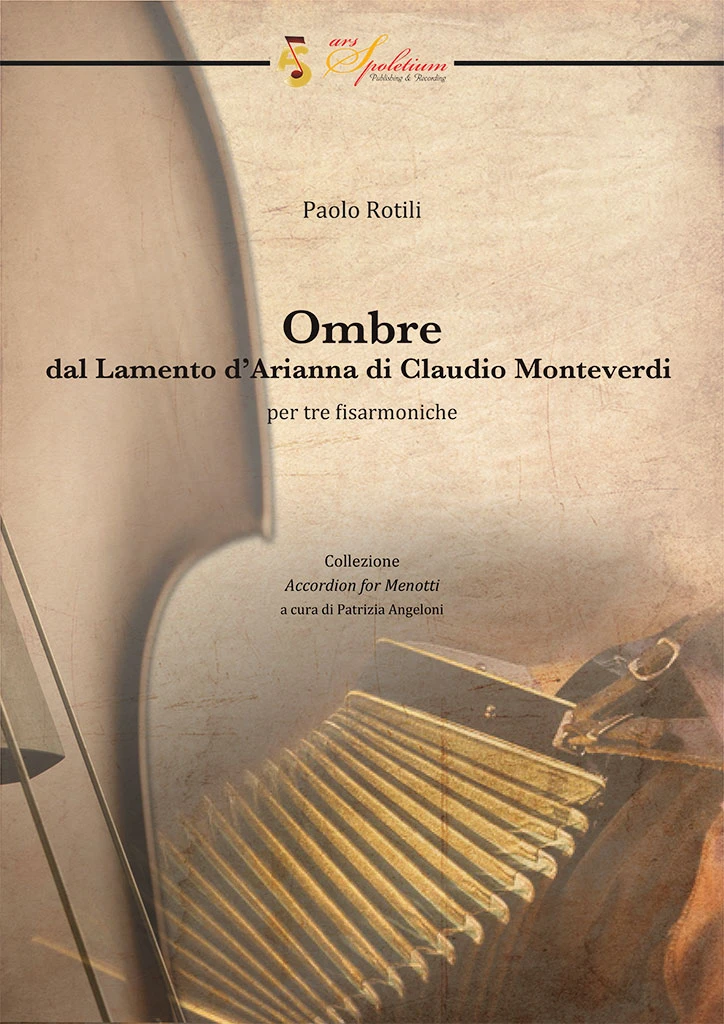Ombre
12,00 €
Del passato rimangono spesso tracce di un oggetto scomparso, in qualche modo contenuto in un altro. L’immagine è quella dei corpi di Pompei, ricostruiti grazie al calco involontario del destino: un corpo presente grazie ad un vuoto, riempito di altro…
Often, the only remnant of past, disappeared objects are their traces; traces, in some ways, contained in other objects. Think for example, of the bodies in Pompei, which have been reconstructed thanks to the traces left in the lava by bodies that no longer exist.
Ombre (2019) dal Lamento d’Arianna di Claudio Monteverdi per tre fisarmoniche pp. 29 (partitura e parti)
Del passato rimangono spesso tracce di un oggetto scomparso, in qualche modo contenuto in un altro. L’immagine è quella dei corpi di Pompei, ricostruiti grazie al calco involontario del destino: un corpo presente grazie ad un vuoto, riempito di altro… Non una citazione, né una semplice variazione da elementi desunti, piuttosto una composizione che ricostruisse il testo originario, richiamato, esteso, trasfigurato a partire dalla traccia della scrittura. Così, intorno alla musica dei primissimi versi della composizione di Monteverdi Lamento d’Arianna, le tracce del corpo – l’intervallo di seconda, le movenze gestuali, l’impianto armonico e formale – sono il calco per un corpo inevitabilmente altro, ma che poi è lo stesso. Qui, l’ulteriore scrittura ripropone l’oggetto, il corpo, insieme all’ombra di sé, come uno sfondo prospettico, una striscia di colore, come un’ulteriore eco del suo farsi e disfarsi.
Paolo Rotili
Première: Patrizia Angeloni, Stefano Di Loreto, Umberto Turchi 12.07.2021 – Festival Pontino di Musica – Sermoneta.
Ombre (2019) dal Lamento d’Arianna di Claudio Monteverdi for three accordions pp. 29 (score and parts)
Often, the only remnant of past, disappeared objects are their traces; traces, in some ways, contained in other objects. Think for example, of the bodies in Pompei, which have been reconstructed thanks to the traces left in the lava by bodies that no longer exist. In the same way, in my composition, elements taken from the first verses of Monteverdi’s Lamento d’Arianna, as traces of a musical body – the interval of a second, a distinct musical gesture, its harmonic and formal structure – become the mold for another body, strange but the same at once. As this image suggests, I strived to write a work which would have been not a citation, nor a simple variation of inferred elements, but rather a composition which would reconstruct the original text, recalling and extending it in a transfiguration that stems from its written traces. My writing brings together the musical object, i.e. the body, together with its own shadow, which serves as a perspectival background, as a stripe of color, as a further echo of doing and undoing.
Paolo Rotili
Première: Patrizia Angeloni, Stefano Di Loreto, Umberto Turchi 12.07.2021 – Festival Pontino di Musica – Sermoneta.


